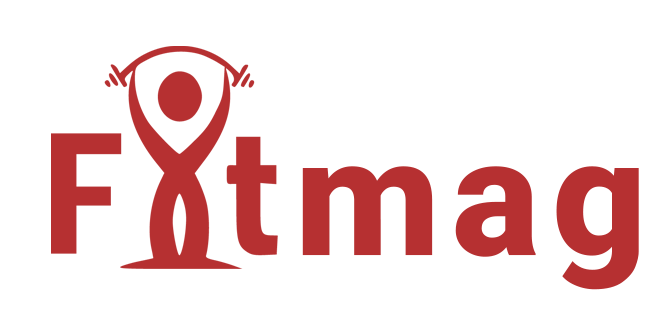High-intensity interval training, known as HIIT, has taken the fitness world by storm. People are raving about its fat-burning magic and time-saving efficiency everywhere you look.
But is the hype around HIIT justified? To answer this question, you need to know more about the advantages and disadvantages of HIIT.
This is why we decided to offer you this article and dive deep into HIIT, exploring the pros and cons to help you decide if it’s the proper workout.
We will explain the science behind HIIT’s effectiveness and discuss its potential benefits, such as burning calories and boosting metabolism. However, we will not ignore the downsides, such as the risk of injury and the demanding nature of the workouts.
We give you a clear picture of whether HIIT can become your new fitness best friend or if a different approach is a better fit.

HIIT Advantages & Disadvantages: Breakdown
Before starting anything, we discussed the HIIT workout thoroughly in the “High-Intensity Interval Training: Everything You Need to Know” article. If you want to know how to do it, you can visit the page and gain more knowledge.
Here, we are only focusing on the advantages and disadvantages.
We all know that HIIT offers a fantastic workout for those in good shape, but it is essential to acknowledge that it’s not for everyone with all fitness levels. Before starting, beginners or those with health concerns should consult a doctor or trainer.
For those who are ready, HIIT can be a powerful tool to achieve fitness goals. By boosting fat-burning, cardiovascular health, endurance, and muscle tone, HIIT can be a valuable addition to any exercise routine.
Let’s mention all the pros and cons of HIIT so you can make the best decision:

HIIT Pros
1. Fat-burning Machine
The HIIT workouts can crank up your calorie burn during the workout, but its power goes further. The intensity can elevate your metabolism for hours afterward, continuing to burn calories at a higher rate.
2. Cardio Champion
Doing HIIT helps you use oxygen more efficiently since it involves alternating bursts of high effort and rest training your body. This results in better endurance and lasting stamina, making you stronger for longer.
3. Muscle-Building Assistant
Of course, it is cardio, but it is more intense! So do not underestimate its muscle-building power. The intensity of the HIIT challenges your muscles, leading to increased muscle mass and improved tone. The metabolic boost can promote continued muscle growth after the workout.
4. Quick & Effective
As mentioned above, you already know that HIIT is a heavy exercise that takes a short amount of time, so that you can do it in a short set of 15-20 minutes. This feature is excellent for people who have limited time.
5. Variety is Key
HIIT is not a fixed program. You can adjust the intensity to suit your fitness level; for instance, you can rest longer initially and lower the rest time between the sets
after getting stronger.
Plus, it can be done with various equipment or even bodyweight exercises! This keeps things fresh and challenges your body in new ways.
6. Workout Anywhere, anytime
Again, we are talking about the flexibility of HIIT. You do not need a gym membership to do this workout. You can do it anywhere, anytime, with no equipment needed.
7. Mind & Body Boost
Alongside the physical benefits, HIIT offers so many mental pros. HIIT can also be a mood-lifter, helping to reduce stress and elevate your spirits. Plus, crushing a HIIT workout can give you a real sense of accomplishment and boost your self-esteem.

HIIT Cons
1. Overtraining Risks
Due to their high intensity, HIIT workouts require adequate recovery. Practicing 2-3 weekly sessions helps your body recover and prevent plateaus. Pushing yourself while exhausted raises the chance of injury due to poor form.
2. Not Beginner-Friendly
HIIT can be complex and intense in a way that makes it less suitable for complete beginners.
Furthermore, warm-ups, movement mechanics, and cool-downs should be taken more seriously to prevent injuries. Those with pre-existing health conditions should consult a doctor before attempting HIIT.
3. A High Injury risks
HIIT is fast-paced, leading to overuse injuries and joint strain if proper form is not maintained. Listen to your body and prioritize rest between sets and sessions. This can be considered one of the most important disadvantages of HIIT.
If you are doing it for the first time, you must ensure you are doing all the workouts properly to avoid any possible damage to your muscles and bones.
4. Complementary, Not Exclusive
This cannot be one of the cons of HIIT workouts, but you should be aware of the consequences. While HIIT excels in specific areas, it should not be the only strategy.
You must aim for 150 minutes of moderate-intensity or 75 minutes of vigorous exercise weekly.
Most experts recommend incorporating low-to-medium intensity cardio and resistance training alongside HIIT for a well-rounded fitness routine.
5. Maximize Your Results
HIIT cannot help you alone to get the best results! HIIT workouts can be a powerful tool for weight loss, muscle building, and cardiovascular health, especially for those with limited time. However, it is better to integrate it with other exercise modalities for optimal results strategically.
After learning all the aspects of HIIT workouts, you can decide whether they are for you or if you need to choose other workout types to help you be fitter and healthier.

Ending
HIIT offers a time-efficient way to boost calorie burn, cardiovascular health, and muscle tone. However, it’s not an excellent choice for everyone.
HIIT’s demanding nature requires proper recovery and form to avoid injury. Before diving in, beginners and those with health concerns should consult a doctor or trainer.
After learning about the pros and cons of HIIT, it is your time to answer: Is HIIT for you? Please share your answers or any questions in the comments below!











